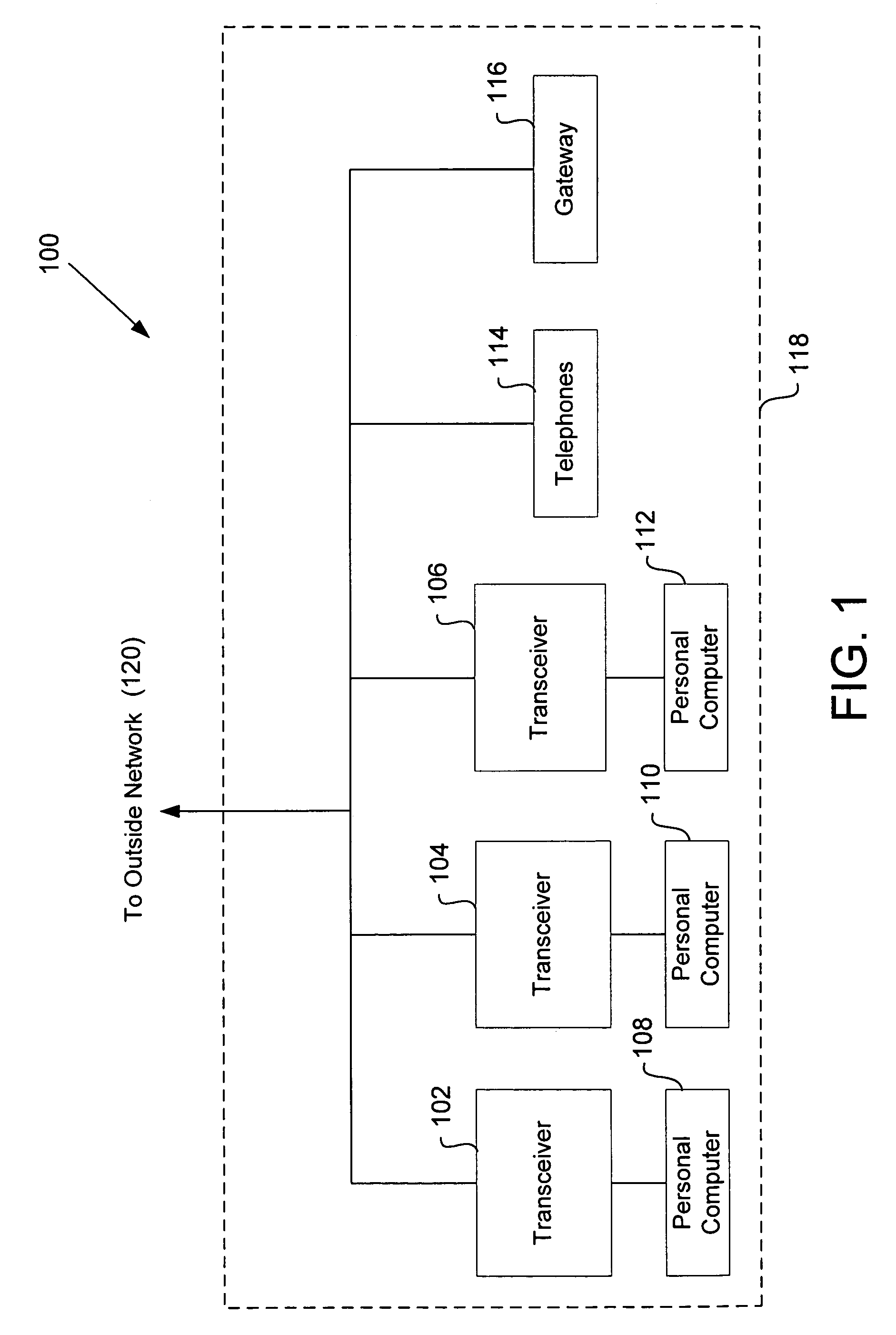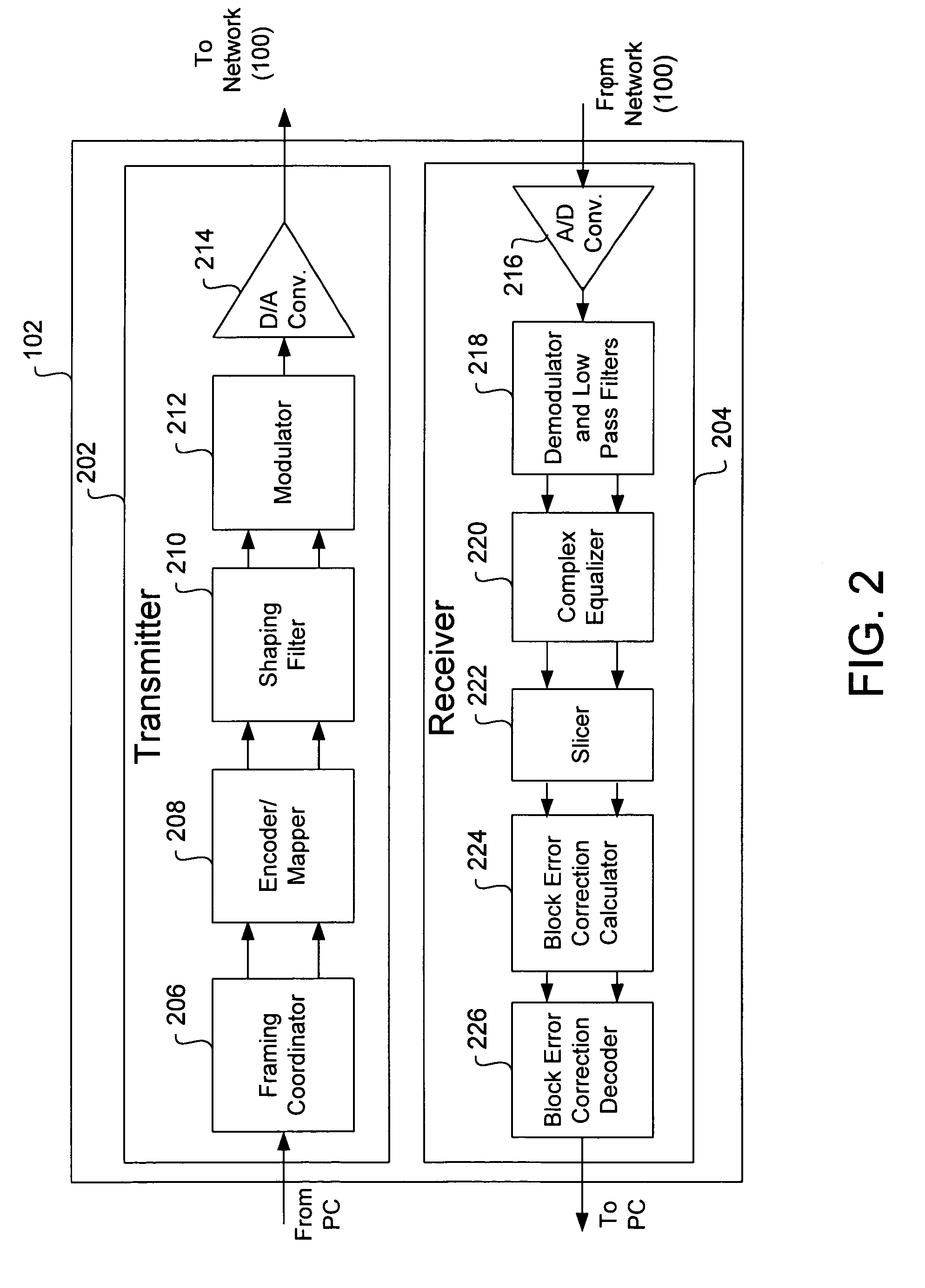System and method for block error correction in packet-based digital communications
a packet-based digital communication and block error technology, applied in the field of network data transmission, can solve the problems of increasing correction capability, more communications bandwidth is used for redundant information as opposed to message data, and increasing transmission time to account for redundant bits, so as to reduce the redundancy of transmitted data packets and efficiently correct block errors
- Summary
- Abstract
- Description
- Claims
- Application Information
AI Technical Summary
Benefits of technology
Problems solved by technology
Method used
Image
Examples
Embodiment Construction
[0024]FIG. 1 is a block diagram illustrating a home telephone wiring network 100 that includes transceivers, or interfaces, 102, 104, and 106 for transmitting and receiving data packets, such as those in accordance with PNT standards, each coupled to personal computers 108, 110, and 112, respectively. The network 100 also includes telephones 114 and a gateway 116. All of these components of the network 100 are disposed in a building 118, such as a home. As shown, the network 100 is coupled to an outside network 120, which in this embodiment is connected to a central office (not shown).
[0025]According to one embodiment, any one of the transceivers 102, 104, and 106 can act as a data packet broadcaster with the other two functioning as endpoints. Alternatively, the gateway 116 may function as the data packet broadcaster with the transceiver 102, 104, and 106 acting as endpoints.
[0026]FIG. 2 illustrates details of the PNT transceiver 102 of FIG. 1. As shown, the transceiver 102 include...
PUM
 Login to View More
Login to View More Abstract
Description
Claims
Application Information
 Login to View More
Login to View More - R&D
- Intellectual Property
- Life Sciences
- Materials
- Tech Scout
- Unparalleled Data Quality
- Higher Quality Content
- 60% Fewer Hallucinations
Browse by: Latest US Patents, China's latest patents, Technical Efficacy Thesaurus, Application Domain, Technology Topic, Popular Technical Reports.
© 2025 PatSnap. All rights reserved.Legal|Privacy policy|Modern Slavery Act Transparency Statement|Sitemap|About US| Contact US: help@patsnap.com



